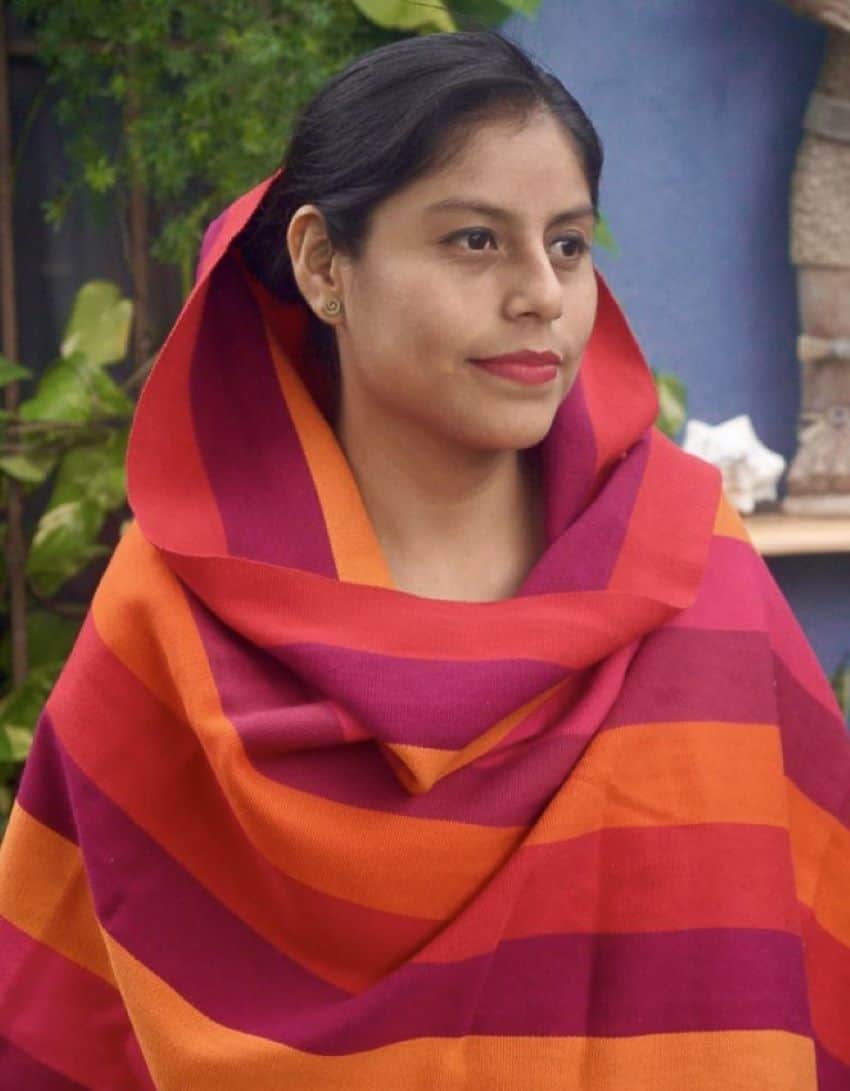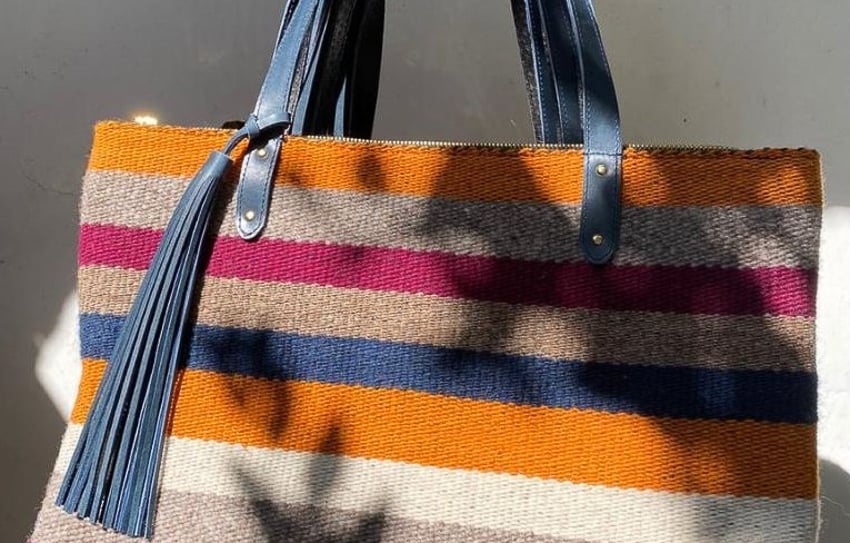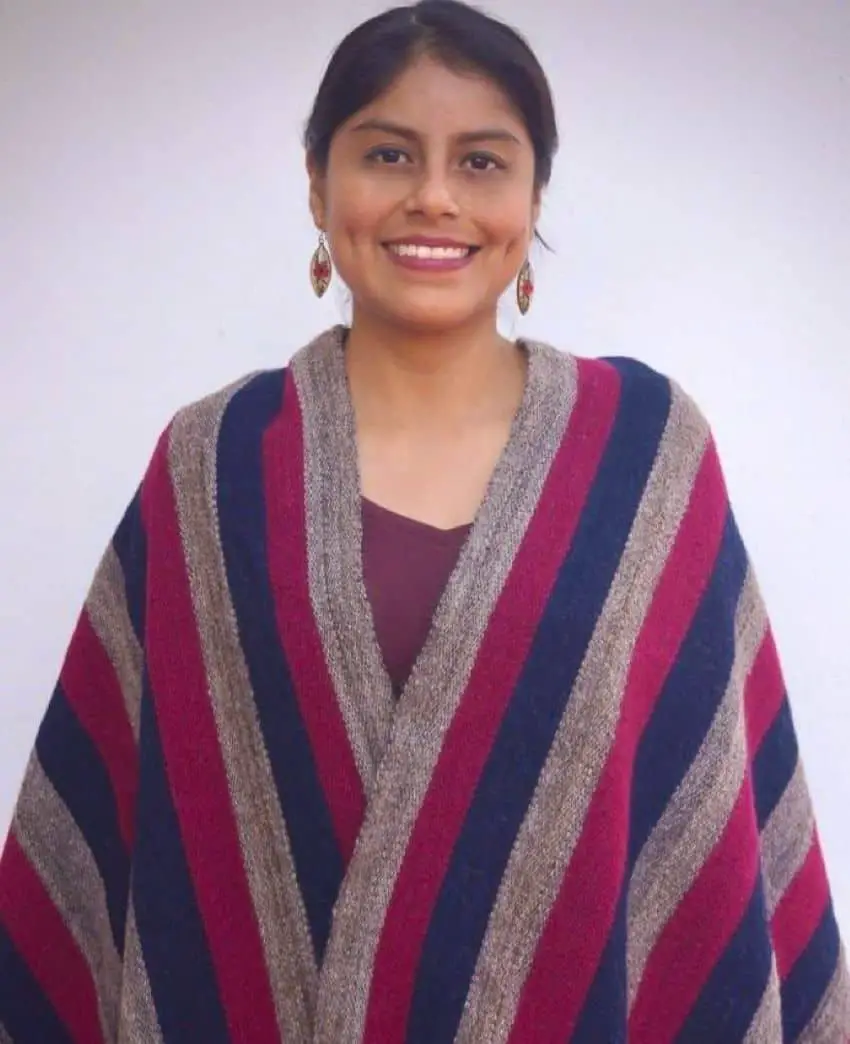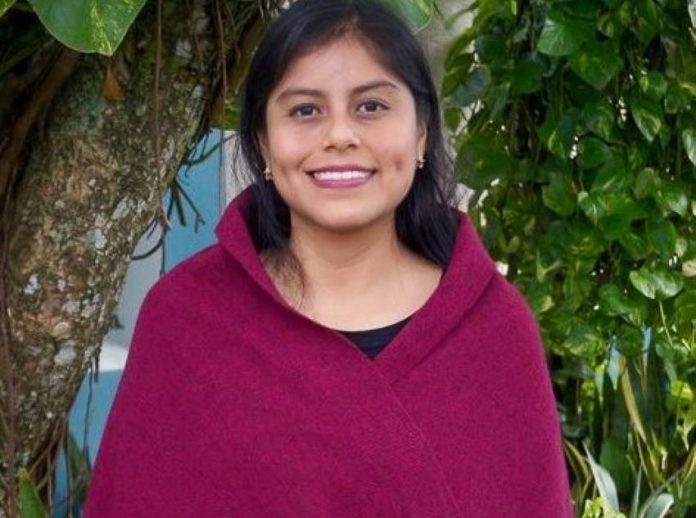It might not seem logical for a group of women specializing in the same kind of handcraft to promote and sell together. After all, isn’t each the other’s competitor? Ah, but there are other factors to consider.
The Nahua women of the Sierra de Zongolica live only 100 kilometers from Xalapa, Veracruz, but it takes several hours by car to get there over winding mountain roads. This isolation has allowed the people of this area to conserve much of their language and way of life.
Veracruz is associated with the oppressive heat and humidity of its long coastline, but the Zongolica region is part of an equally long chain of high mountains that separate the state from Puebla and Oaxaca. The air here is significantly colder, and humidity from the gulf frequently transforms into fog and cold rain.
The Nahua people here have raised sheep since the colonial period, producing wool that is highly prized. Zongolica women combine this wool with weaving techniques from time immemorial. Much of their dyeing is still done using local plant and mineral pigments, but one hallmark of local garments here is the color gray, the natural color of a breed of sheep rarely raised in other parts of Mexico. They make traditional clothing such as rebozos, sarapes, jorongos (like a thick pullover), skirts, and blankets. They also weave cotton for garments such as the frilly, white blouses that women wear.
Until the late 20th century, just about all weaving was done for local use, but despite the values placed on tradition here, the making and wearing of traditional clothing had been dying out.

Then, in 1992, a group of women decided to work together to conserve and revive textile skills in order to produce goods to sell. Although the people here grow and raise what they need to survive, they still need to earn some money for things such as school supplies and electricity.
Banding together was not an easy undertaking. Most of the women who still had the requisite skills live in almost inaccessible villages away from the “main” town of Zongolica. But perhaps even more problematic was one downside to traditional life: the low social status of women.
Women are traditionally shut out of decisions related to economics, politics and religion. For those middle-aged and older, it is not unusual to find women who speak little or no Spanish and who have little to no schooling. And, unfortunately, according to anthropologist Miguel Ángel Sosme Campos, domestic violence isn’t exactly uncommon.
The women’s initial efforts to commercialize their handcrafts were opposed by husbands and authorities, especially since it meant women leaving their homes to travel to markets. But some persevered with the support of family members willing to think outside the box.
Their weavings began to sell farther afield, getting noticed by state authorities. This led to the involvement of Sosme, who arrived as a student to research the region, working with a program of Mexico’s National Institute of Anthropology and History (INAH).
His work was published in the book Tejedoras de esperanza, Empoderamiento de los grupos artesanales de la sierra de Zongolica (Weavers of Hope: Empowering Artisan Groups in the Sierra de Zongolica), the first academic documentation of these Nahua women and their lives.

It was followed by the minidocumentary Tlakimilolli: voces del telar (Tlakimilolli: Voices Of The Loom), which has been screened in the United States, Europe and South America.
But Sosme did not stop there. For the past eight years, he has been the weavers’ main interlocutor, nationally and internationally. He has even brought their work to the attention of international organizations such as the Los Amigos de Arte Popular in the United States.
This success prompted local and state authorities to establish the Regional Festival and Competition of Zongolica Textile Arts.
The success of the past eight years can be seen in both the handcrafts and the women who make them. Weaving and dyeing techniques have been rescued, documented and taught to younger generations.
Most of the garments made are traditional, but contact with the wider world has meant new products as well such as scarves, backpacks, costume jewelry and dolls.
The income from the weaving means higher social status for Nahua women, often bringing more money than can be earned from crops. It also means that they become the faces of their communities as they travel to Xalapa, the port of Veracruz, other parts of Mexico and even abroad.

Like so many other artisans, their sales have dropped because of the loss of cultural events. But their collaboration with institutions has allowed them to set up and run a Facebook page.
According to Sosme, Internet sales have been a lifeline, allowing the women to survive the pandemic even though their physical isolation from the rest of Mexico means that almost no one has gotten ill.
They accept orders from Mexico and abroad with payments through Mexican bank deposits, Western Union and Paypal.
This is the first in a series of stories highlighting Mexican artisans by Mexico News Daily culture writer Leigh Thelmadatter.
